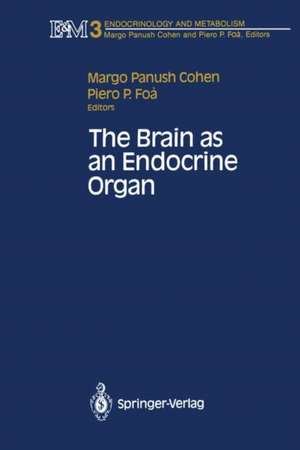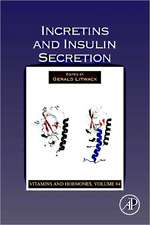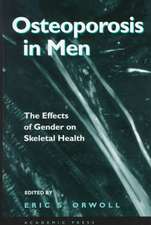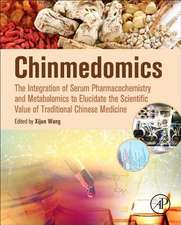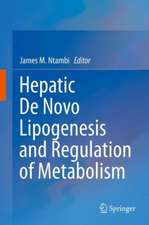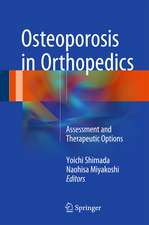The Brain as an Endocrine Organ: Endocrinology and Metabolism, cartea 3
Editat de Margo P. Cohen, Piero P. Foaen Limba Engleză Paperback – 30 sep 2011
Preț: 368.00 lei
Preț vechi: 387.38 lei
-5% Nou
Puncte Express: 552
Preț estimativ în valută:
70.42€ • 72.65$ • 58.76£
70.42€ • 72.65$ • 58.76£
Carte tipărită la comandă
Livrare economică 26 martie-09 aprilie
Preluare comenzi: 021 569.72.76
Specificații
ISBN-13: 9781461281184
ISBN-10: 1461281180
Pagini: 284
Ilustrații: XII, 269 p.
Dimensiuni: 155 x 235 x 15 mm
Greutate: 0.4 kg
Ediția:Softcover reprint of the original 1st ed. 1989
Editura: Springer
Colecția Springer
Seria Endocrinology and Metabolism
Locul publicării:New York, NY, United States
ISBN-10: 1461281180
Pagini: 284
Ilustrații: XII, 269 p.
Dimensiuni: 155 x 235 x 15 mm
Greutate: 0.4 kg
Ediția:Softcover reprint of the original 1st ed. 1989
Editura: Springer
Colecția Springer
Seria Endocrinology and Metabolism
Locul publicării:New York, NY, United States
Public țintă
ResearchCuprins
1. Gonadotropin Releasing Hormones: Physiopathology and Clinical Applications.- Chemical and Biologic Properties of GnRH.- Physiology of GnRH.- Abnormal GnRH Secretion.- Clinical Applications of GnRH and of Its Analogs.- Conclusions.- 2. Corticotropin-Releasing Factors.- Historical Perspectives.- Corticotropin-Releasing Factors.- Tissue Distribution of CRH.- CRH in Blood and CSF.- CRH Receptors.- Administration of Exogenous CRH.- Conclusions.- 3. The Neurobiology of Anorexia Nervosa: An Auto-Addiction?.- Overview of Anorexia Nervosa.- The Auto-Addiction Opioid Hypothesis.- Summary.- 4. The Pineal and Its Indole Products: Basic Aspects and Clinical Applications.- Anatomic Connections of the Visual System with the Pineal Gland.- Transynaptic Regulation of Pineal Indoleamine Metabolism.- Pineal Serotonin Metabolism.- Factors Influencing Pineal and Plasma Melatonin Levels.- Melatonin in Other Body Fluids.- Final Comment.- 5. Neuropeptides and Glucose Metabolism.- History.- Neuropeptides and Changes in Blood Glucose Levels.- Clinical Implications of Hyperglycemic Neuropeptides.- Summary and Conclusions.- 6. Feedback Regulation of Growth Hormone Secretion.- Regulation of GH Secretion.- Receptors for Insulin, IGF-I, and IGF-II in the Pituitary.- Feedback Regulation of GH by IGF-I.- Pituitary IGF-I.- Conclusion.- 7. Brain Adenosine and Purinergic Modulation of Central Nervous System Excitability.- Release of Adenosine and ATP.- Inactivation of Released Purines.- Binding of Ligands to Purinergic Receptors.- Localization of Adenosine Receptors.- Adenosine Actions at the Cellular Level.- Behavioral Actions of Adenosine.- Neuroendocrine Effects of Adenosine.- Conclusions.
